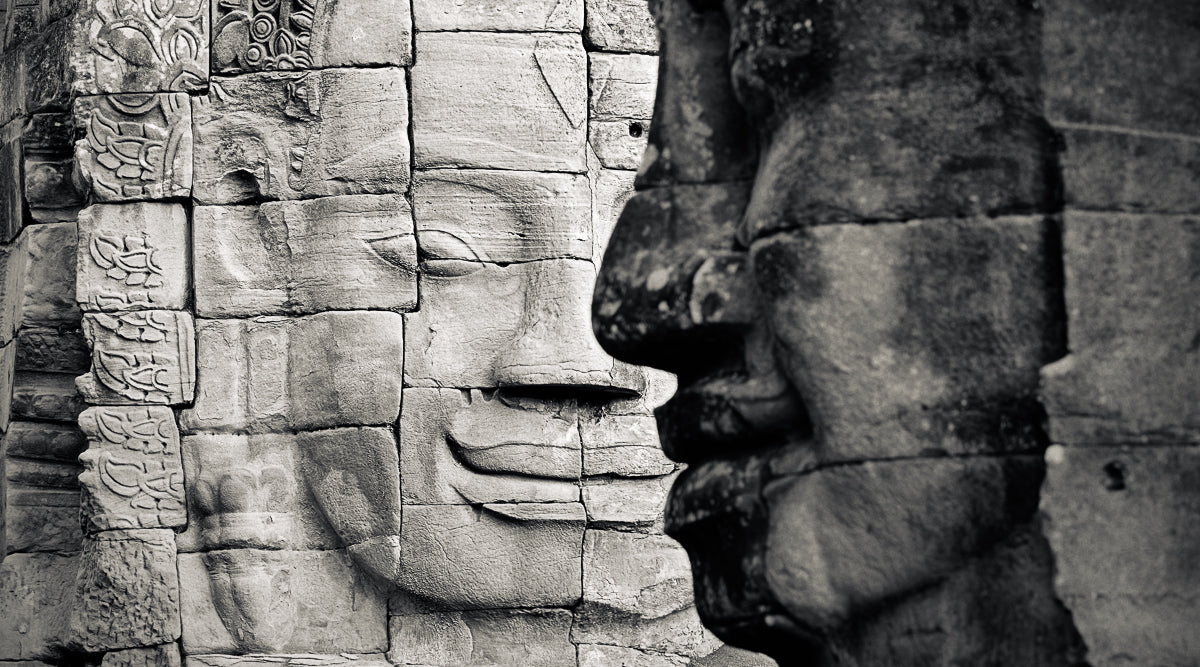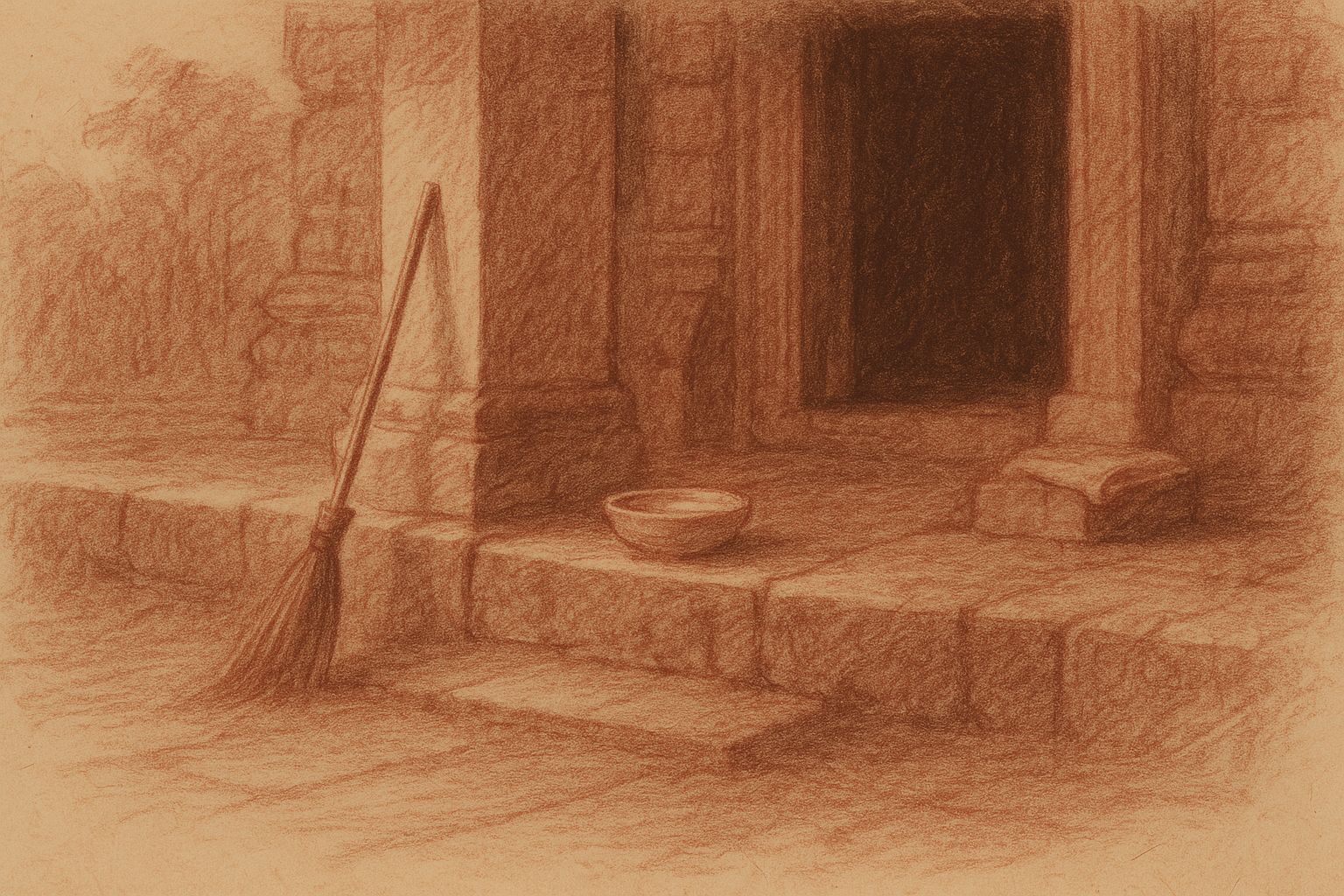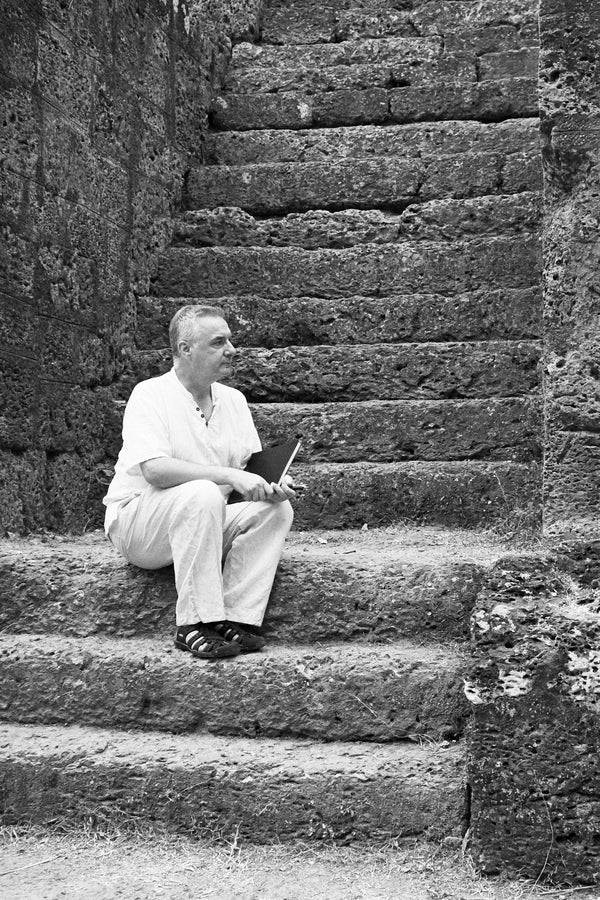Complimentary worldwide shipping on orders over $400 · No import tariffs for most countries
Complimentary worldwide shipping on orders over $400 · No import tariffs for most countries

Breathing in Stone, Holding the Gaze
Bayon, the temple-mountain of serene visages, reveals more than devotion—it reveals breath. In Where Stone Still Breathes, two faces meet across a threshold of light: one swathed in shadow, the other kissed by dawn. Their silence is not absence—it is presence enduring.
Lucas Varro captured this image on medium-format black-and-white film in the pale hush before sunrise. The long exposure allows time to settle into each fissure. Later, through chiaroscuro shaping and hand-toning, the artist guided light into gesture, shadow into breath. The photograph is not a document, but a communion.
Within the Spirit of Angkor series, this work embodies the paradox of impermanence and gaze. Here, compassion outlives empire.
Printed as a hand-toned archival pigment print on Hahnemühle Bamboo paper—chosen for its warmth, sustainability, and spiritual tactility—this image is offered in a strictly limited edition of 25, with 2 Artist’s Proofs. Each is signed and numbered on the border recto, and accompanied by a certificate of authenticity.
May it enter your space not as artefact, but as guardian. A quiet witness to stillness that still breathes.
Also in Library

Before the Shutter Falls
3 min read
Before the shutter falls, fear sharpens and doubt measures the cost of waiting. In the quiet hours before dawn, the act of not-yet-beginning becomes a discipline of attention. This essay reflects on patience, restraint, and the quiet mercy that arrives when outcome loosens its hold.

Those Who Keep the Way Open — On the Quiet Guardians of Angkor’s Thresholds
3 min read
Quiet gestures shape the way into Angkor — a swept stone, a refilled bowl, a hand steadying a guardian lion. This essay reflects on the unseen custodians whose daily care keeps the thresholds open, revealing how sacredness endures not through stone alone, but through those who tend its meaning.

Multiplicity and Mercy — The Face Towers of Jayavarman VII
5 min read
A new vision of kingship rises at the Bayon: serene faces turned to every horizon, shaping a world where authority is expressed as care. Moving through the terraces, one enters a field of steady, compassionate presence — a landscape where stone, light, and time teach through quiet attention.
Bayon Temple, Angkor, Cambodia — 2018
Limited Edition Archival Pigment Print
Edition
Strictly limited to 25 prints + 2 Artist’s Proofs
Medium
Hand-toned black-and-white archival pigment print on Hahnemühle Bamboo — a museum-grade fine art paper chosen for its quiet tactility and reverent depth, echoing the spirit of the temples.
Signature & Numbering
Each print is individually signed and numbered by the artist on the border (recto)
Certificate of Authenticity
Accompanies every print
Image Size
8 x 8 inches (20.3 x 20.3 cm)
Dawn gathers in Bayon’s corridors like water in a stone bowl, cool and unhurried. Two faces emerge—one cloaked in the last breath of night, the other brushed by the first silver syllable of morning. Their exchange seems less carving than thought made visible.
In this suspended hush, centuries contract to the width of a heartbeat. The terrace beneath me belongs to no empire, only to presence: stone inhaling light, exhaling stillness.
I pressed the shutter only when my breathing matched the temple’s. Medium-format black-and-white film accepted the moment’s slow cadence; in the darkroom I polished shadow and glow as one turns prayer beads, until compassion stirred within the grains. Hand-toning followed, gifting each print its own quiet pulse.
This strictly limited edition of twenty-five prints (with two Artist’s Proofs) rests on Hahnemühle Bamboo paper whose warm fibers cradle silver and carbon like earth cradles seed. Signed, numbered, and accompanied by a certificate of authenticity, each piece is a silent threshold of reflection.
May it find the wall where your own silence waits.
To walk deeper into the hush behind this image, click here to enter the Artist’s Journal.
Previously titled ‘Face Towers I, Bayon Temple, Angkor, Cambodia. 2018,’ this photograph has been renamed to better reflect its place in the series and its spiritual tone. The edition, provenance, and authenticity remain unchanged.
Join My Studio Journal
Receive occasional letters from my studio in Siem Reap—offering a glimpse into my creative process, early access to new fine art prints, field notes from the temples of Angkor, exhibition announcements, and reflections on beauty, impermanence, and the spirit of place.
No noise. No clutter. Just quiet inspiration, delivered gently.
Subscribe and stay connected to the unfolding story.

Join My Studio Journal
Receive occasional letters from my studio in Siem Reap—offering a glimpse into my creative process, early access to new fine art prints, field notes from the temples of Angkor, exhibition announcements, and reflections on beauty, impermanence, and the spirit of place.
No noise. No clutter. Just quiet inspiration, delivered gently.
Subscribe and stay connected to the unfolding story.

